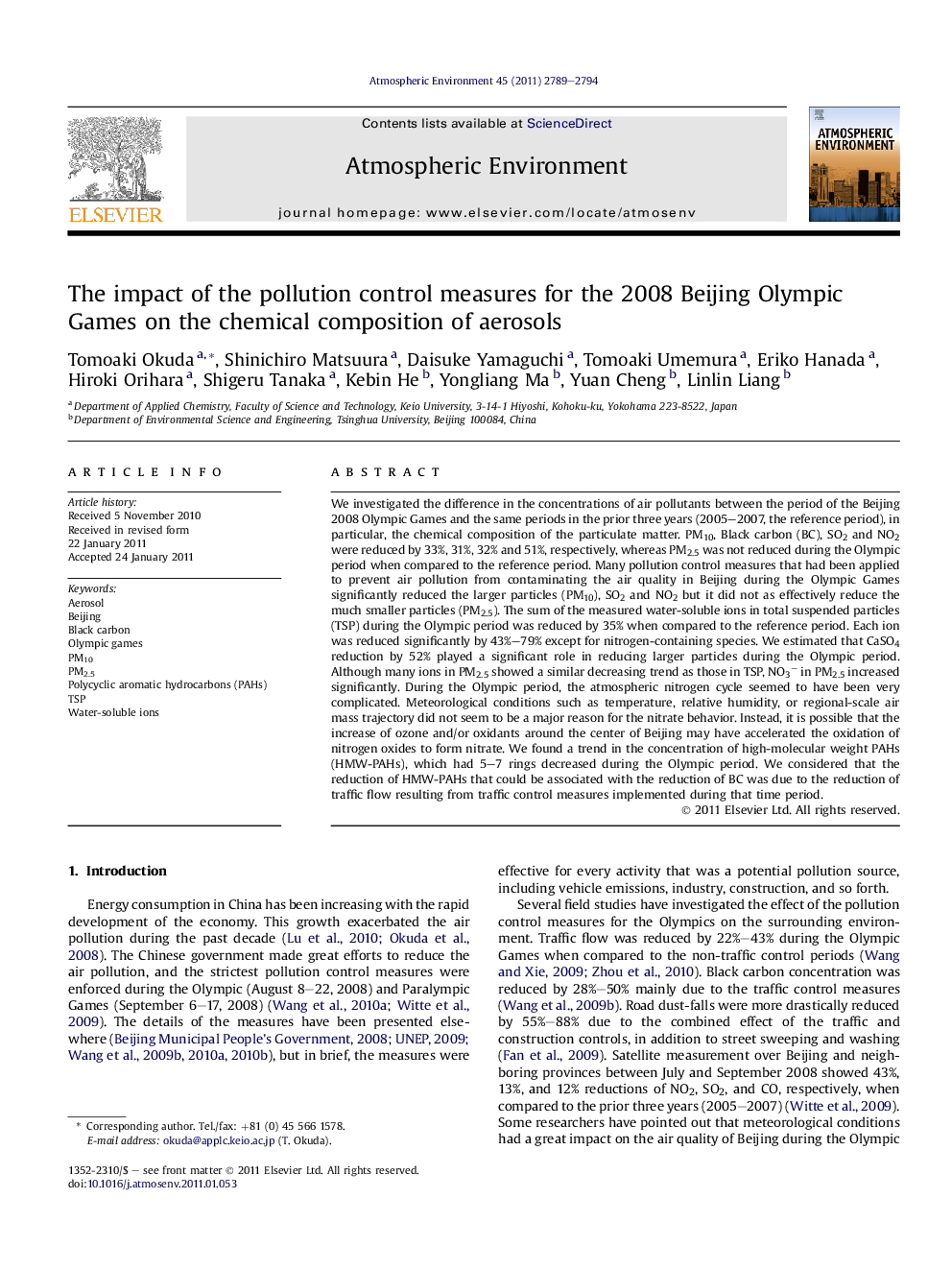| کد مقاله | کد نشریه | سال انتشار | مقاله انگلیسی | نسخه تمام متن |
|---|---|---|---|---|
| 4439989 | 1311041 | 2011 | 6 صفحه PDF | دانلود رایگان |

We investigated the difference in the concentrations of air pollutants between the period of the Beijing 2008 Olympic Games and the same periods in the prior three years (2005–2007, the reference period), in particular, the chemical composition of the particulate matter. PM10, Black carbon (BC), SO2 and NO2 were reduced by 33%, 31%, 32% and 51%, respectively, whereas PM2.5 was not reduced during the Olympic period when compared to the reference period. Many pollution control measures that had been applied to prevent air pollution from contaminating the air quality in Beijing during the Olympic Games significantly reduced the larger particles (PM10), SO2 and NO2 but it did not as effectively reduce the much smaller particles (PM2.5). The sum of the measured water-soluble ions in total suspended particles (TSP) during the Olympic period was reduced by 35% when compared to the reference period. Each ion was reduced significantly by 43%–79% except for nitrogen-containing species. We estimated that CaSO4 reduction by 52% played a significant role in reducing larger particles during the Olympic period. Although many ions in PM2.5 showed a similar decreasing trend as those in TSP, NO3− in PM2.5 increased significantly. During the Olympic period, the atmospheric nitrogen cycle seemed to have been very complicated. Meteorological conditions such as temperature, relative humidity, or regional-scale air mass trajectory did not seem to be a major reason for the nitrate behavior. Instead, it is possible that the increase of ozone and/or oxidants around the center of Beijing may have accelerated the oxidation of nitrogen oxides to form nitrate. We found a trend in the concentration of high-molecular weight PAHs (HMW-PAHs), which had 5–7 rings decreased during the Olympic period. We considered that the reduction of HMW-PAHs that could be associated with the reduction of BC was due to the reduction of traffic flow resulting from traffic control measures implemented during that time period.
Figure optionsDownload high-quality image (201 K)Download as PowerPoint slideHighlights
► PM10 and Black carbon (BC) were reduced by 33% and 31%, respectively.
► PM2.5 was not reduced during the Olympic period when compared to reference period.
► Each water-soluble ion was reduced significantly by 43%–79% except for N-species.
► CaSO4 reduction by 52% played a significant role in reducing larger particles.
► The reduction of HMW-PAHs was due to the traffic control measures during the Olympic.
Journal: Atmospheric Environment - Volume 45, Issue 16, May 2011, Pages 2789–2794